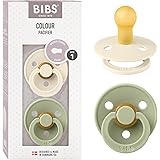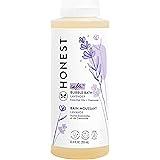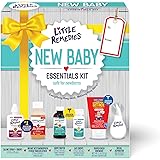As seen in the video above, dealing with a baby’s stuffy nose can be a truly challenging experience for any parent. When your little one is too young to blow their nose, that uncomfortable congestion can lead to disrupted sleep, difficulty feeding, and general fussiness. Thankfully, effective solutions exist, and a nasal aspirator is often regarded as a simple yet powerful tool for providing much-needed baby stuffy nose relief.
The gentle removal of mucus can significantly improve your baby’s breathing and overall comfort. This guide will delve deeper into understanding why babies get congested, how to use a nasal aspirator effectively, and other complementary methods to ensure your infant breathes easy.
Understanding Why Babies Get Stuffy Noses
Infants, with their tiny nasal passages, are particularly susceptible to infant congestion. There are several common reasons why a baby might develop a stuffy nose:
- Colds and Viruses: These are among the most frequent culprits. A baby’s developing immune system is still learning to fight off common viruses, leading to increased mucus production.
- Allergies: While less common in very young infants, exposure to allergens like pollen, dust mites, or pet dander can cause nasal passages to become inflamed and produce excess mucus.
- Dry Air: Low humidity, especially during winter months or in air-conditioned environments, can dry out nasal secretions, making them thicker and harder for the baby to clear naturally.
- Irritants: Exposure to cigarette smoke, strong perfumes, or other airborne irritants can also trigger nasal congestion.
It is often observed that because infants breathe primarily through their noses, even mild congestion can cause significant distress and impact their ability to feed and sleep peacefully.
The Importance of Relieving Newborn Stuffy Nose Congestion
When a baby’s nose is blocked, several critical functions can be affected. For instance, feeding can become particularly difficult. Babies need to breathe through their nose while sucking, so a stuffy nose can interrupt their feeding rhythm, potentially leading to inadequate intake and fussiness during meal times. Furthermore, the discomfort from congestion often disrupts sleep patterns, affecting both the baby and the parents.
Effective mucus removal is not just about comfort; it is also about ensuring proper breathing. While babies are resilient, persistent nasal obstruction can occasionally lead to more significant breathing challenges, especially during sleep. Therefore, proactive management of baby stuffy nose relief is often recommended by pediatricians.
1. Utilizing a Nasal Aspirator for Gentle Suction
As demonstrated in the video, a nasal aspirator is considered a highly effective tool for clearing your baby’s nasal passages. The specific type shown, a mouth-suction aspirator, is designed to provide gentle yet effective gentle suction. It consists of a nozzle that is placed in the baby’s nostril, a tube, and a mouthpiece for the parent to suck through. A crucial feature of these devices is the built-in filter, which prevents mucus from reaching the parent’s mouth, ensuring hygiene and peace of mind.
These aspirators are often preferred by parents for their ability to control the suction strength, allowing for a more tailored and comfortable experience for the baby. Bulb aspirators are also available, offering another method for aspiration, though some parents find mouth-suction models provide more consistent and controllable suction.
Step-by-Step Guide to Using a Mouth-Suction Nasal Aspirator
To ensure maximum effectiveness and comfort for your baby, a systematic approach is usually followed when using a mouth-suction aspirator:
1. Prepare the Area and Your Baby:
- Wash your hands thoroughly to prevent the spread of germs.
- Gather your aspirator and a tissue or cloth for wiping.
- Ensure your baby is calm and comfortable. This may involve soothing them beforehand or trying it during a time when they are generally content.
2. Position Your Baby:
- Lay your baby on their back on a changing table or hold them in your lap with their head gently supported.
- It is often found that a slightly elevated head position can make the process easier.
3. Use Saline Drops (Optional but Recommended):
- Administer 1-2 drops of saline solution into each nostril.
- Allow 30-60 seconds for the saline to loosen and thin the mucus. This step is designed to make the mucus removal process much easier and less irritating for the baby.
4. Insert the Nozzle:
- Carefully insert the soft tip of the aspirator into one of your baby’s nostrils, making sure not to push it too far in.
- Angle the tip slightly towards the side of the nostril rather than straight up.
5. Apply Gentle Suction:
- Place the mouthpiece in your mouth and gently suck.
- Increase the suction gradually and consistently until mucus is observed in the aspirator’s collection chamber.
- Avoid aggressive or prolonged suction, as this can irritate the delicate nasal lining.
6. Clear and Repeat:
- Remove the aspirator from the nostril.
- Clear the collected mucus from the aspirator into a tissue.
- Repeat the process for the other nostril if needed.
- Only a few seconds of suction per nostril is usually sufficient.
7. Clean the Aspirator:
- After each use, disassemble the aspirator and wash all parts thoroughly with warm, soapy water.
- Rinse well and allow to air dry completely to prevent bacterial growth.
2. Complementary Methods for Baby Stuffy Nose Relief
While nasal aspirators are highly effective, they are often used in conjunction with other simple strategies to provide comprehensive baby stuffy nose relief. These methods aim to loosen mucus and create a more comfortable environment for your baby:
1. Humidifiers:
- A cool-mist humidifier in your baby’s room can significantly increase air moisture.
- This added humidity is often found to help thin nasal mucus, making it easier for your baby to clear naturally or with an aspirator.
- Ensure the humidifier is cleaned regularly according to manufacturer instructions to prevent mold growth.
2. Steamy Bathroom:
- Creating a steamy environment can be a quick fix for stubborn congestion.
- Simply run a hot shower with the bathroom door closed for about 10-15 minutes, allowing steam to build up.
- Bring your baby into the steamy bathroom (do not put them in the hot water) for about 10-15 minutes. This warm, moist air can help break up thick mucus.
3. Elevated Sleeping Position (with caution):
- For older infants, a slightly elevated sleeping position can sometimes help with drainage.
- This should only be done safely: place a wedge *under* the mattress (never in the crib with the baby) or elevate the head of the crib by placing books or risers under the crib legs.
- Always prioritize safe sleep guidelines, ensuring there are no loose blankets or pillows in the crib.
4. Hydration:
- Ensure your baby is receiving adequate fluids.
- For infants, this means frequent breastfeeds or formula feeds. Good hydration is often observed to help keep mucus thin and flowing.
5. Gentle Patting and Massage:
- Gently patting your baby’s back in an upright position can sometimes help dislodge mucus from the chest and throat, encouraging them to clear it.
- A gentle massage around the sinuses (avoiding direct pressure on the eyes) can also be soothing.
When to Consult Your Pediatrician
While most cases of baby stuffy nose relief can be managed at home, it is important to know when professional medical advice is needed. Contact your pediatrician if you observe any of the following:
- Fever (especially in infants under 3 months)
- Difficulty breathing, rapid breathing, or wheezing
- Nasal flaring (nostrils widening with each breath)
- Retractions (skin sucking in around the ribs or collarbone)
- Blueish tint around the lips or fingernails
- Persistent coughing
- Refusal to feed or significantly decreased wet diapers
- Symptoms that worsen or do not improve within a few days
- Ear tugging or excessive fussiness, which might indicate an ear infection
Proactive care and a clear understanding of your baby’s symptoms are crucial in ensuring they receive timely and appropriate baby stuffy nose relief.











